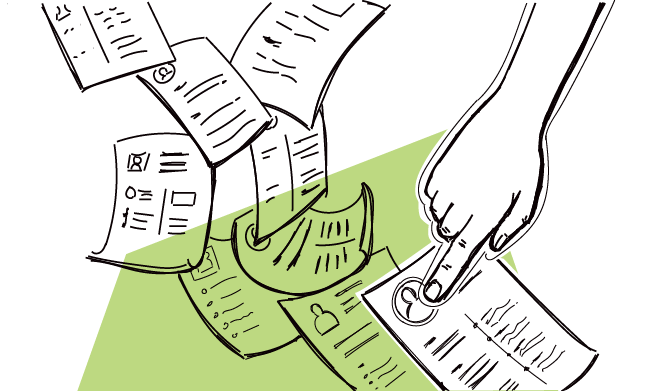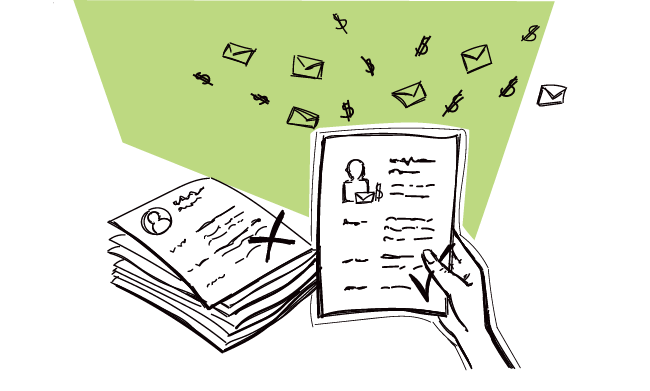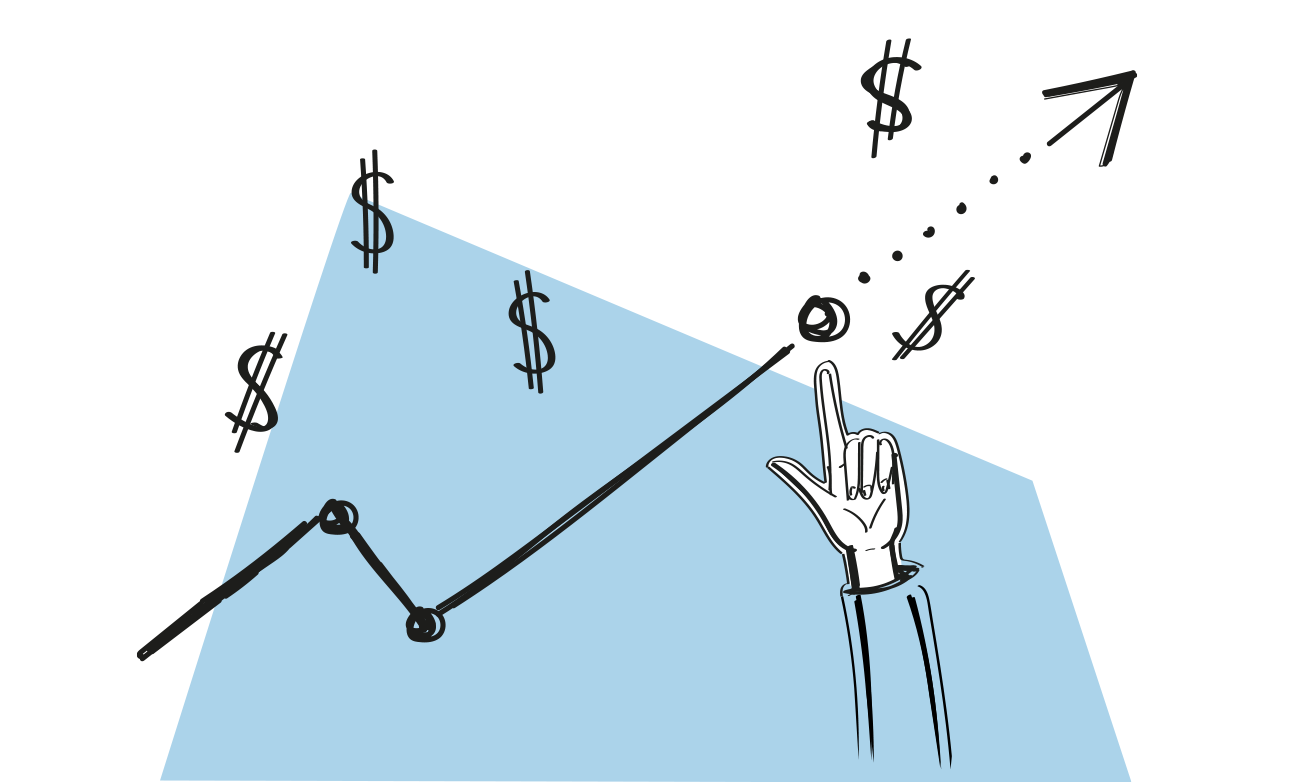Sales forecasting offers you a glimpse into the future of your sales revenue. And what company wouldn’t want to get a sneak peek at that? Without accurate sales forecasts, your marketing efforts will find it more difficult to align with customer demand and your future revenue will always be something of a recurring monthly surprise.
This means the ability to predict future sales performance has a great influence on your marketing strategies.
But there isn’t one bulletproof method of predicting sales that will work for all companies. Instead, there are several that can work for coming up with good sales forecast estimates and help your marketing team create strategies based on those sales outcomes.
This post will focus on some of the most popular methods of creating a sales forecast based on historical sales data, various data points and more.
So let’s dive into this brief guide to sales forecasting!
What is sales forecasting?
Sales forecasting is an estimation of your future sales for a given period of time. Most sales forecasts are done on a monthly, quarterly or yearly basis.
It goes without saying that sales forecasts should be as accurate as possible. But the standard for accurate sales forecasts is flexible by necessity since it’s impossible to make a 100% correct prediction.
There are several approaches you can take to try to estimate your future sales revenue. The forecasting process doesn’t always have to follow the same path. Some methods are backed with past sales data, some focus on current sales figures, others rely more on market research and still others use sales forecasting software.
On the other hand, plenty of organizations take the old school route of looking at their current sales pipeline and using the input of their sales team.
There simply is no single “correct” way to estimate future sales.
We’ll get into more detail about sales forecasting methods below. But first, see why sales forecasting is a must.
The importance of sales forecasting
With sales predictions and reasonably accurate forecasting, you can get a better idea of how to plan ahead for hiring new team members, budgeting and managing resources
Should you hire another sales rep? What should the budget for marketing be right now? Will you meet important sales targets? Are you setting realistic sales quotas for your team?
A sales forecast will help you and other stakeholders at your company to make better, informed decisions about these and other issues.
With accurate sales forecasts, you can identify issues with your sales strategy or overall performance before they become bigger problems.
Sales managers and other stakeholders can be aware of what they can expect in terms of revenue and plan in advance. Investors also benefit from being able to make better, more timely decisions as well.
So how can you predict sales in a way that is reliable and create an accurate sales forecast that can be used?
Sales forecasting methods
Here are some of the most often-used sales forecasting methods:
Deal stages
What’s it about? In this method, you assess how likely deals are to close, based on at what stage of the pipeline they are currently in. That’s why we sometimes call it ‘pipeline forecasting’.
How does it work? Once you choose the reporting period and determine the potential value of each deal and how likely it is to close, you multiply the probability by the size of an opportunity.
You back this method with data – you use your conversion rates in between deal stages to identify the probability of closing, so this metric has to be reliable. Otherwise, the results will be inaccurate. Every forecasting method relies on accurate inputs to get accurate outputs.
See how to identify your sales process stages and conversion rates>>
What this approach doesn’t take into account, though, is the age of a given opportunity. This means two opportunities could be assigned the same potential value, even though one’s been sitting in the pipeline for 4 months, and the other for 4 days.
Every kind of sales forecast has some kind of blind spot.
Past data forecasting
What’s it about? You use historical data to create a prediction for future sales.
How does it work? You take a look at the past sales data for a given time period, e.g. a month or a quarter, and make an estimate. You can add your average growth rate into the equation.
This is a traditional forecasting method that has served businesses well. After all, what better way to get an idea of how much you will sell, for example, this December than by looking at how much you sold last December?
Sales forecasting doesn’t always have to be high-tech and complex. Basic sales metrics like how much you sold in the same period in the past can also be a valuable guide.
Make sure you’re using comparable time periods. For example, if December always brings you much more sales than other months, don’t make a prediction for July based on it.
Take seasonality and the demand into account. This historical forecasting method has to accommodate the same rises and falls that always influence sales.
Think also about any internal factors that might affect the results, e.g. has your team grown recently? Is your biggest competitor running an effective marketing campaign? Are industry trends creating a difficult sales environment? Are there other factors in play that can affect sales?
Some of those factors might be hard to show in specific numbers, which is a downside of this approach. Accurate forecasts depend on accurate inputs into the model, which is not always possible.
You also won’t be able to use it in new businesses, since there’s no past data to use yet.
The “ask a sales rep” method
What’s it about? The name already gives it away. Here you rely on your sales reps’ prediction of closing their deals.
How does it work? This is as simple as it gets – you ask your sales reps two questions:
- How likely are you to close that deal?
- When are you going to close it?
The team members will base their answers on their experience and expertise, but it’s still a very subjective estimation. Some of them might be more optimistic than realistic about the outcome, or – on the contrary – play it safe and make a more pessimistic guess.
This method is often used by new businesses, though, as they don’t yet have any historical data to back their sales forecasts with.
This kind of intuitive sales forecasting can be effective despite its basic nature. The pros in your sales organization will know from experience more or less what they can expect and apply it to the sales forecasting process.
Sales cycle forecasting
What’s it about? You take a look at how long a deal has been sitting in your pipeline, and compare it with your average sales cycle length.
How does it work? It relies on the basic assumption that the longer a prospect has been in your pipeline, the closer you are to sealing the deal.
With this method, you can get more specific and create a sales estimation based on how a lead has been acquired. For example, if the first touchpoint is a cold email, a prospect will probably need more time to close than someone who reached out to you directly, asking about your product features.
Note: This method needs reliable data on your sales cycle length, which means the sales reps need to keep very good track and log all necessary data into the CRM. A guesstimate won’t do, so this approach won’t really work for new businesses who don’t yet know how long it takes them to close a deal.
The downside to this method? Sometimes a lead spends a long time in the pipeline because it’s not going anywhere. This is the kind of thing that makes accurate sales forecasting hard. All that you have to guide you is your experience and intuition about how a lead is progressing. Will certain leads turn into actual sales? Who knows. Sales organizations have to make calls like this all the time, so make yours and move on.
Multivariable analysis forecast
What’s it about? Multivariable analysis forecast combines parts of other methods. As a result, it’s the most complex one.
How does it work? It’s based on predictive analytics and uses data like average sales cycle length and opportunity closing rate.
Since it’s based on so much data, this method can potentially bring you the most accurate predictions. Again, the more accurate your input, the more accurate sales forecasts you get.
Achieving this accuracy isn’t really about your sales forecast methodology, since simple methods can serve you just as well.
But, if you have the resources, this kind of multivariable analysis forecasting can provide a degree of accuracy that other sales forecasts don’t.
But what it also means is that well-organized and accurate data is an absolute must in this case and acquiring and organizing that data comes with a cost. It can also require advanced analytics tools or data-driven insights into the sales process, which makes it more appropriate for established companies with sufficient resources rather than new ones whose budgets are tighter.
Over to you
We hope this article has given you at least something to think about when it comes to which sales forecasting method would work best for you.
The important takeaway here is that there is a range of sales forecasting tools and no single one of them is right for all cases. If you need to create a sales forecast, look around at the resources you have, the kind of historical sales data you have access to and the assets on your sales team, especially sales leaders.
Put them all together and you should have what you need to enjoy the benefits of an accurate sales forecast.
If you found this post useful, you might also like these blog posts:
How to Set Achievable Sales Targets for an Outbound Sales Team>>
How to Build a Sales Pipeline to Turn Your Outbound Leads into Customers?>>
How to Effectively Manage a Sales Pipeline to Grow Your Customer Base?>>
READ ALSO

How to Build an Effective Outbound Sales Team?
If you’re considering building an internal outbound sales team, it’s a sign that your company levels up. But how do you know this is actually the right moment to hire? And what roles do you need in your team for a start? What’s the difference between SDR and BDR? How to figure it all out? This blog post answers all these questions and sheds some light on how to build a team that is effective and motivated to succeed.

How to Hire a BDR to Boost Sales at Your Company?
A while ago I wrote a blog post about hiring an SDR to handle cold mailing at your company. Today we’ll take a look at another important role in the sales team: a Business Development Representative - and how to hire one. How does this position differ from a Sales Development Representative? Where to find the right candidates? How to determine whether they’ll be good at their job? Use the tips I offer in this blog post and you’ll find the right BDR for your sales team in no time.

How to Hire an SDR to Handle Cold Emailing at Your Company?
When you’re about to hire an outbound specialist but know zip about cold mailing yourself, you might find yourself stabbing in the dark. Should you hire one specialist or split the job into two positions? Where do you look for candidates? What questions should you ask them to assess if they’ll do a good job prospecting and reaching out to prospective clients? I believe this blog post will help you maneuver through the hiring process and find a good Sales Development Representative to handle cold mailing at your company.

